The goddess Inanna (Ishtar), featured in ancient Mesopotamian mythology, is known as the “Goddess of Love and War” and has been identified with many deities across various cultures. Let’s delve deeper into this fascinating topic.
Was Inanna from Sirius?
From a spiritual perspective, Inanna’s origin is said to be the Sirius star system. Sirius is considered to be closely related to ancient Egypt, the Dogon people, and Japanese Shinto, and is a star system deeply connected to wisdom, water, sound, language, and DNA. Inanna herself possesses many Sirian elements, such as love, art, fertility, and knowledge.
“Inanna-like Beings” in World Mythologies
When we compare goddesses from different regions, common keywords like “water,” “love,” “art,” “sound,” “beauty,” and “creativity” emerge, despite differences in culture and language. (Some theories vary, of course!) This suggests that Inanna’s soul (or archetype) might be etched into the collective consciousness of humanity, with each civilization giving her a different name in their own way.
| Region | Name | Characteristics/Attributes |
| Mesopotamia | Inanna / Ishtar | Goddess of love, war, and fertility. Associated with Venus. |
| Greece | Aphrodite | Goddess of beauty and love. Born from the sea. |
| Rome | Venus | Identified with Aphrodite. Symbol of femininity. |
| Egypt | Hathor | Goddess of music, beauty, love, and motherhood. Deeply connected to Sirius. |
| Japan | Ichikishima-hime (Benzaiten) | Goddess of water, music, beauty, and intellect. Holds a biwa (lute). |
| India | Saraswati (Benzaiten) | Goddess of learning, arts, and music. Goddess of pure rivers. |
| Celtic | Brigid | Triple goddess of poetry, smithcraft, and healing. |
Archeology × Mythical Mystery: Were Shakkō Dogū, Jōmon Venus, and Haniwa the “Footprints of the Gods”?
We’ll discuss this with reference to Hiroshi Hayashi’s YouTube channel.
Ancient Japan has left behind mysterious artifacts: Dogū (earthen figures) and Haniwa (clay figures). Among them, the Shakkō Dogū and Jōmon Venus are particularly notable for their unusual leg structures.
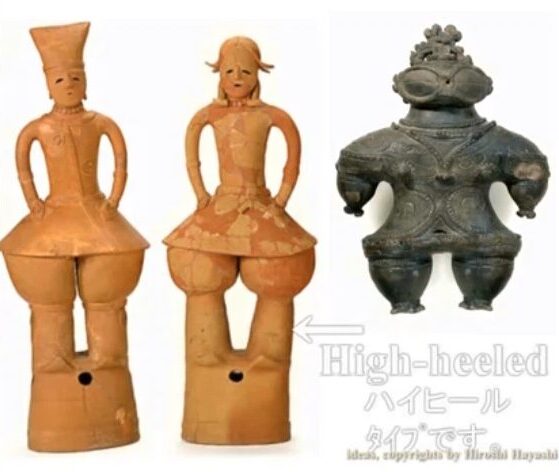
High-Heel and Low-Heel “Walking Assistance Devices”?
First, observe their leg parts. They resemble modern high heels or boots and are clearly different from bare human feet.

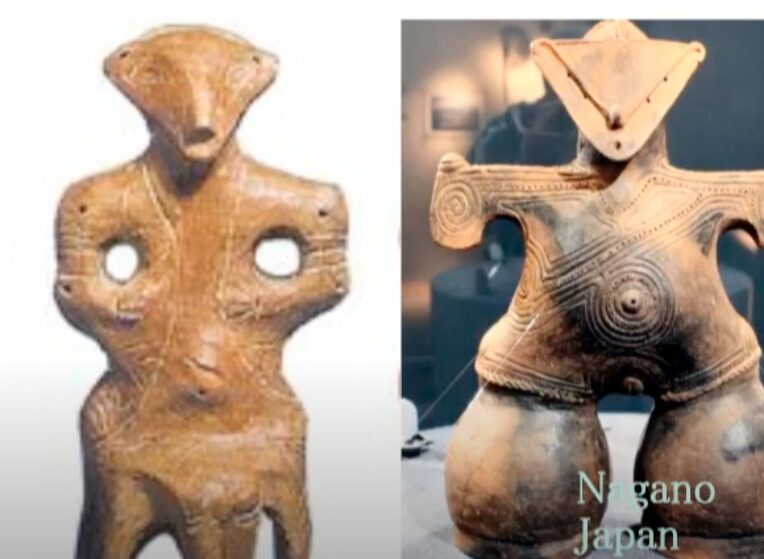
Pay attention to the “Masked Goddess” on the right:
- Jōmon Venus: High-heeled type
- Shakkō Dogū: Low-heeled type
- Haniwa (specific human figures): Common leg structure
There’s a theory that these weren’t just designs but rather walking assistance devices (power support gear). This suggests they were beings who couldn’t walk freely on Earth—perhaps beings from a planet with different gravity or atmospheric composition.
The “Same Feet” Found Worldwide
Surprisingly, remarkably similar figures have been found in the megalithic temples of Malta in the Mediterranean, far from Japan, and in the Vinča culture sites of Serbia.
Malta Megalithic Temples [World Heritage Site of the Republic of Malta] Mediterranean Ancient Civilization Mystery! – skyticket Travel Guide (This link from the original text directs to a travel guide for Malta’s Megalithic Temples.) The “Megalithic Temples of Malta” are a World Heritage Site on the islands of Malta and Gozo in the Mediterranean Sea. They are considered archaeologically very valuable as the oldest stone buildings constructed by humankind, predating the pyramids of Egypt by far. Around what time, and by what kind of people…?
Comparison points:
- Leg shape (attached assistive devices)
- Structure around the armpits and mouth
- Slanted eyes and mask-like facial features
- Deformed representation of hips and chest
Malta: Deeper History than the Egyptian Pyramids?! Approaching the Temples of Malta! Myu Rome Myu Venice Blog | Optional Tours/Local Tours by Myu (This link from the original text directs to a travel blog about Malta.) Myu Rome Myu Venice Blog, article “Malta: Deeper History than the Egyptian Pyramids?! Approaching the Temples of Malta!”. Brought to you by the local staff of Myu Rome Myu Venice.
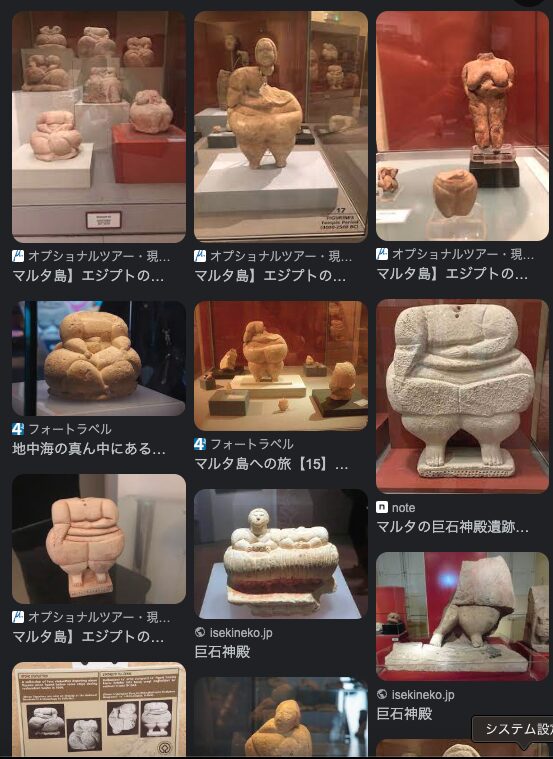
Note: The Vinča statue from Serbia and Japan’s “Masked Goddess” statue. They are beyond “similar” and are “identical.”
Inanna/Ishtar = Jōmon Venus Theory
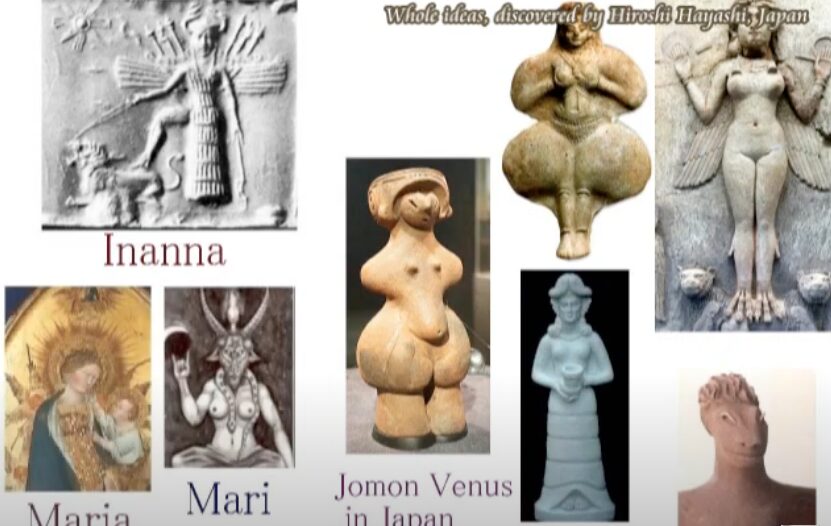
The goddess Inanna/Ishtar from ancient Sumerian and Babylonian mythology is a being who presides over war, sexuality, Venus, and fertility, and is often depicted wearing a mask and helmet.
- Her statues share very similar characteristics with the Jōmon Venus and Shakkō Dogū.
- The fact that similar figures were witnessed and represented across different parts of Earth suggests… they were real beings?
Therefore, the interpretation that Jōmon Venus = Inanna/Ishtar is no longer far-fetched; it can be seen as the actual manifestation of a goddess figure etched into ancient global memory.
Where exactly did this Inanna/Ishtar come from…?
Two Theories: Reincarnation or Physical Descent?
There are two main theories about how Inanna interacted with Earth:
- Reincarnation Theory: Inanna was a soul from Sirius who reincarnated as a human and was passed down through myths as a goddess. Later reincarnations are also believed to have played roles as Japanese deities.
- Physical Descent Theory: In ancient times, when Earth was in contact with alien civilizations, Inanna physically descended to Earth as a high-dimensional being. She was also involved in the Anunnaki’s human project (genetic manipulation) and played a role in guiding human civilization.
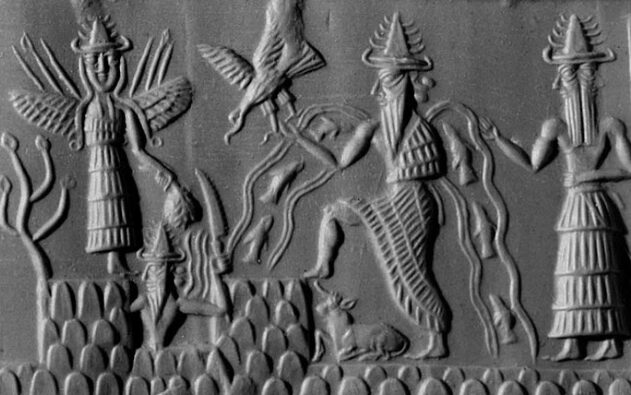
Both theories coexist and are interpreted from the perspective of “multi-dimensional soul activity.”
Connection to Japanese Mythology
Japan was a gathering place for Anunnaki such as Enlil, Enki, and Inanna. Inanna is also identified with Ichikishima-hime-no-Mikoto (市杵島姫命) in Japanese mythology. Furthermore, there are theories such as:
- Inanna = Ichikishima-hime-no-Mikoto = Benzaiten.
- Inanna = A being of Sirian origin with wisdom of water and sound.
- Traces of Inanna can be seen in Jōmon Venus and other goddess figures.
- The “Samurai Statue” discovered at Hōryūji Temple is actually an Inanna/Ishtar statue.
In conclusion, the most natural view may be that Inanna is a multi-dimensional being with a “Sirian soul,” who sometimes reincarnated on Earth and sometimes descended as a high-dimensional being, leaving her name in various myths across the globe.
These are not merely “artistic creations.” They might be ancient messages conveying something that came from distant stars.
This perspective certainly adds a new layer to our understanding of ancient myths and artifacts! Would you like to explore any other aspects of this theory or perhaps look into another mythical figure?
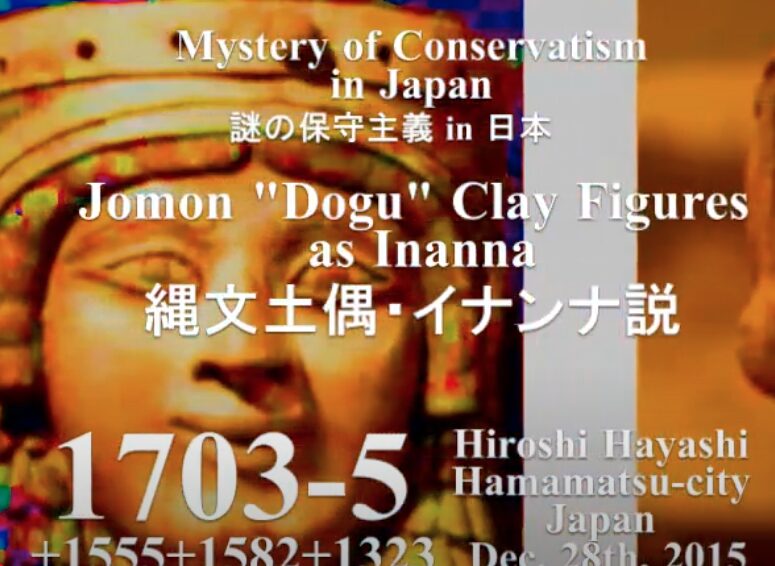


コメント